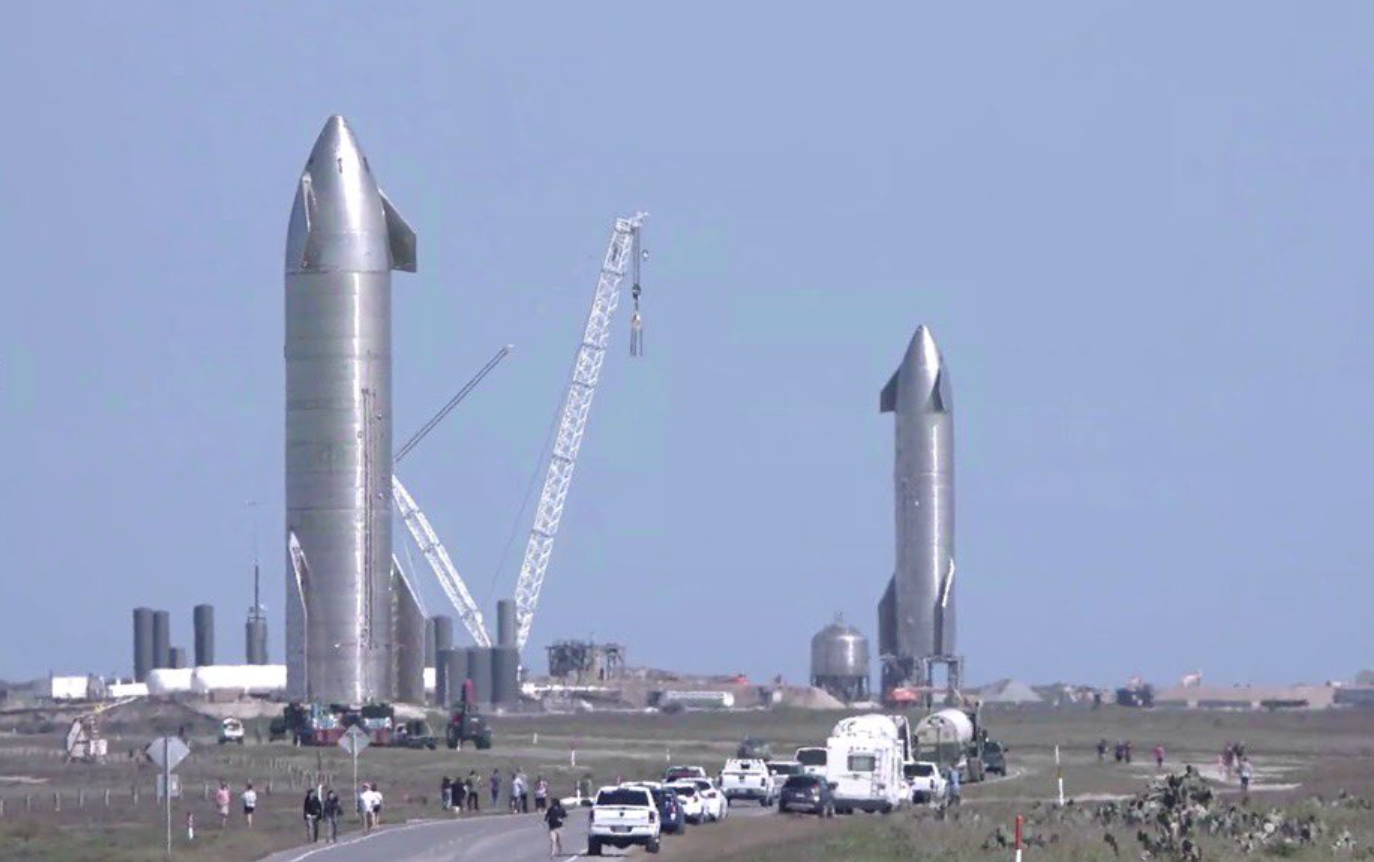SpaceX has two Starship prototypes on the pad at the same time
It looks like a scene from science fiction: Two gleaming silver rocket ships standing side-by-side under the Texas sun awaiting their turn to fly.
But the shiny, finned SpaceX rockets — Starship SN9 and SN10 prototypes — actually exist and met at the pad for the first time Friday (Jan. 29) at the company's South Texas facility near Boca Chica Village. The SN10 vehicle, SpaceX's latest in a line of new reusable Starship prototypes, rolled out to the pad as its SN9 counterpart awaits its own test flight, which could launch as soon as Monday (Feb. 1).
"Starship SN9 & SN10," SpaceX CEO Elon Musk wrote on Twitter Friday as he shared a view of the two suborbital rockets. Video cameras from the tourist site Spadre.com and others also caught the view, including this close-up from NASASpaceflight.com.
Starship and Super Heavy: SpaceX's Mars-colonizing vehicles in images
Starship SN9 and SN10 are the latest test versions of a planned fully reusable launch system envisioned by SpaceX to fly astronauts and payloads on deep-space missions. SN9 and Sn10 are each powered by three of SpaceX's Raptor engines and designed to fly on suborbital test flights up to 6.2 miles (10 kilometers)
SpaceX launched the Starship SN8 prototype, an earlier version of the vehicle, on a similar test flight on Dec. 9. That flight reached an altitude of about 7.8 miles (12.5 km) and performed two harrowing flips to return to Earth for a landing attempt. It failed to stick the touchdown and exploded on impact.
SpaceX is hoping for a better performance by SN9.
Breaking space news, the latest updates on rocket launches, skywatching events and more!
Eagle-eyed SpaceX watchers have been watching the SN9 prototype on its test stand for days as the company appeared to ready the rocket for launch. However, officials with the Federal Aviation Administration, which oversees commercial rocket launches, have said the company did not yet have final approval to launch.
"The FAA will continue to work with SpaceX to evaluate additional information provided by the company as part of its application to modify its launch license," an FAA spokesperson said in a statement to Space.com Friday.
SpaceX's Starship stands 165 feet tall (50 meters), with its final version using six Raptor engines to reach space. It will launch atop a massive booster, called the Super Heavy, that will use about 30 Raptor engines to carry Starship vehicles to orbit. Both spacecraft are designed to land back on Earth for later reuse, much like SpaceX's current fleet of Falcon 9 and Falcon Heavy boosters.
NASA has picked SpaceX's Starship as one of three different designs, each led by a different team, to potentially fly astronauts to the moon as part of the space agency's Artemis program.
Email Tariq Malik at tmalik@space.com or follow him @tariqjmalik. Follow us @Spacedotcom, Facebook and Instagram.

Tariq is the award-winning Editor-in-Chief of Space.com and joined the team in 2001. He covers human spaceflight, as well as skywatching and entertainment. He became Space.com's Editor-in-Chief in 2019. Before joining Space.com, Tariq was a staff reporter for The Los Angeles Times covering education and city beats in La Habra, Fullerton and Huntington Beach. He's a recipient of the 2022 Harry Kolcum Award for excellence in space reporting and the 2025 Space Pioneer Award from the National Space Society. He is an Eagle Scout and Space Camp alum with journalism degrees from the USC and NYU. You can find Tariq at Space.com and as the co-host to the This Week In Space podcast on the TWiT network. To see his latest project, you can follow Tariq on Twitter @tariqjmalik.

